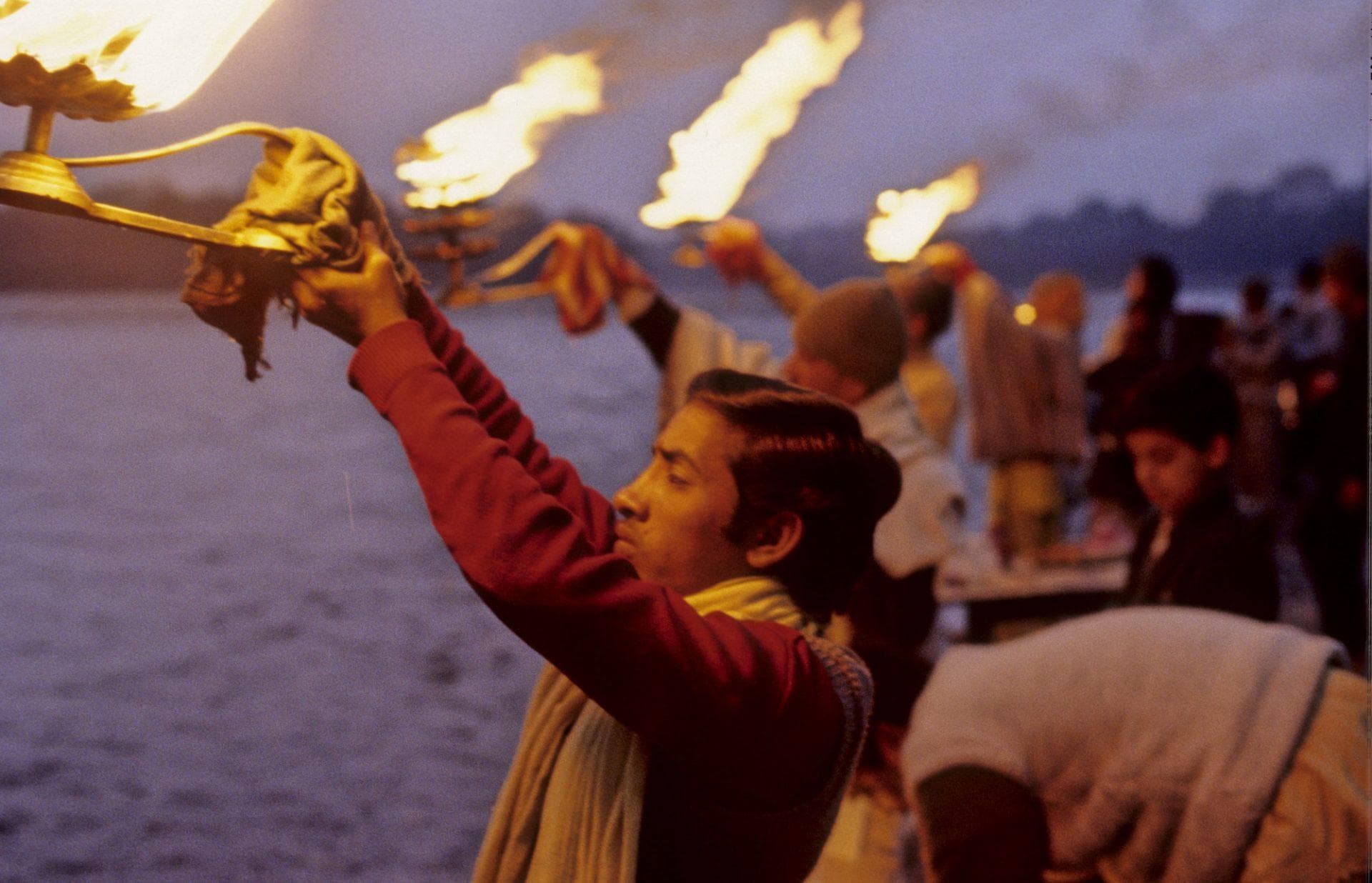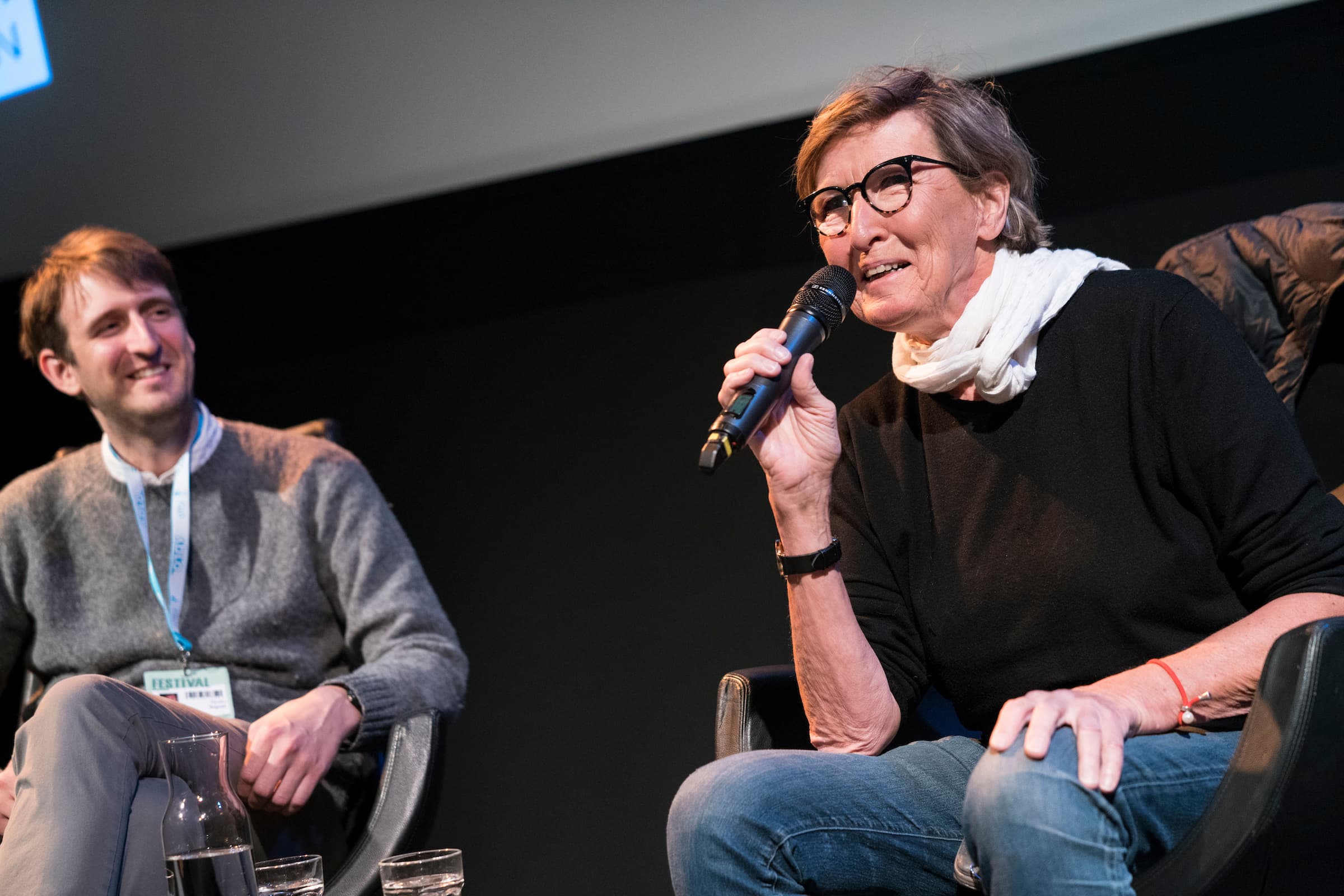
Merciless Beauty
Director Pirjo Honkasalo on shooting on film and her choice for the Visual Voice.
When Finnish director Pirjo Honkasalo was making her 1996 documentary Atman, which follows two brothers on a pilgrimage across India, she was shooting on 35 mm. She and her crew were making the journey with their subjects on public transport – and with 600 kilos of equipment and 5 kilos of money. This was a German production, and the German technicians demanded it be shot on 35 mm, in spite of Honkasalo’s recommendation that they try super-16 mm instead. “With 35 mm, you have four minutes and then you have to open the side of the camera [to change the film]. It was so dirty in India that after four minutes, we had to build a tent and the assistant had to go in to load.”

Atman
Honkasalo was the cinematographer on the film, which screens in IDFA’s Camera in Focus programme. She wasn’t able to see rushes. There was a crew of five. She had hired an Indian camera assistant, but he turned up in Calcutta in a white suit and white shoes. “Why are you dressed like that?” Honkasalo asked him. “I come from a caste that does not carry,” he told her… and it was true, he wouldn’t lift a finger to shift the equipment.
Atman may have been hellish (“very heavy” as the director puts it) to shoot, but it went on to win the Joris Ivens Award at IDFA and is now acknowledged as a classic. Speak to Honkasalo and you quickly see the advantages of doubling up as director and cinematographer. She never had to explain to herself just where she should put the camera. Honkasalo was already editing the documentary in her mind. She didn’t waste time or film. The Finnish director has always been proficient with equipment. She comes from a family of engineers and knows exactly how to strip a camera.

Nicolas Rapold and Pirjo Honkasalo at IDFA 2017
Even after Honkasalo became a successful filmmaker, her father would ask her when she was going to get a proper job. For all his bluster, he had always yearned to become an artist himself. “He was a very successful engineer, but if he had come from a rich family, he would have gone to the art school. It’s from him the interest in art comes.”
Honkasalo likes every job in filmmaking. “I am a sound freak and I’ve edited most of my films.” However, she still sees documentary cinematography as the “most exciting” of all the tasks she undertakes. “You have to be like a cat,” she says. “You wait forever and then you jump fast.” She makes fiction films as well as documentaries but doesn’t see huge differences between the forms. “I always say that fiction is the documentation of the actor. You can’t hide the real you. Even if you are playing Leonardo Da Vinci, it is still you!”
Whatever happens on a documentary or a fiction film, the Finnish director very rarely becomes angry. “Fortunately, I’ve got a temperament that the more wrong it goes, the calmer I become.”

The House is Black
As a contributor to IDFA’s Visual Voice programme, Honkasalo was given the chance to programme a film that had had a profound influence on her. She chose The House Is Black (1962), a little-known 20-minute short from Iranian filmmaker and poet Forough Farrokhzad, who died in a car crash in her early 30s a few years after the film was completed. It’s about the inhabitants of a leper colony in Iran. “It is hard to look at because of what it does to their hands and faces. But the way it is done I think is really fantastic – the rhythm, the composition of the pictures and the tenderness of the director’s gaze.”
One critic has referred to the “merciless beauty” in Honkasalo’s own work – and merciless beauty is what she sees in The House Is Black.